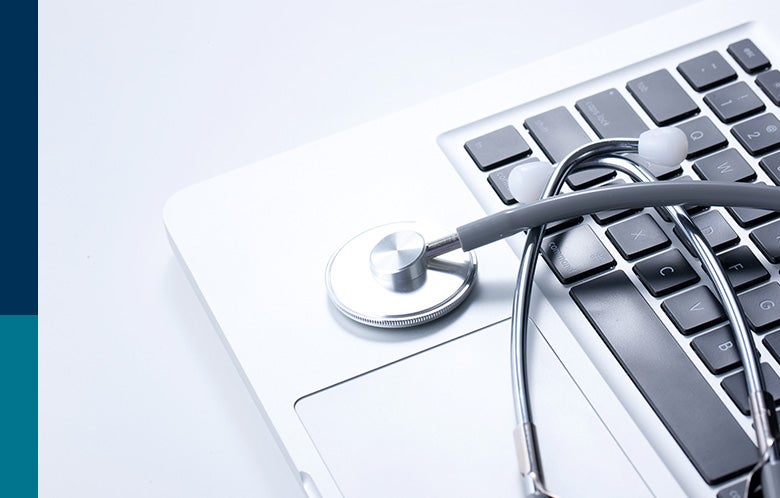In the first two installments of this series, we outlined some of the challenges that clinicians encounter as clinical care becomes more cognitively and technically complex and the environment in which clinicians care for patients becomes faster paced and increasingly regulated. We also discussed how point-of-care clinical reference tools (POC) have evolved to address some of these challenges.
In this installment, we will look toward the future to understand how these tools may continue to evolve to better meet the needs of both clinicians and patients in this complicated milieu. We will focus on two key areas of advancement. The first relates to ease of use, the second to supporting clinical decision-making.
As pointed out by Shaughnessy and Slawson in a BMJ article, a clinician’s use of POC tools is influenced by their ease of use. Interestingly, the complexity of care since this publication in 1997 has significantly increased. Gaining access to, navigating within, and interacting with other elements of a clinician’s workflow must, and in some cases are already, being addressed. Tools that automatically open a reference tool upon entering the electronic health record (EHR), such as single sign-on (SSO), already exist. However, not all institutions support SSO nor necessarily recognize its value. Enhancing access to patient health information (PHI) while meeting HIPAA requirements is a fine balance.
The development of HL7 (Health Level Seven) and SMART (Substitutable Medical Applications and Reusable Technologies) on FHIR (Fast Healthcare Interoperability Resources) technology are software vehicles that have been developed to accomplish this. They provide secure universal access to information in an EHR and represent an open and standardized means of exchanging data among EHRs, health system sites, and data sources. Although not all EHRs support these technologies and some institutions wish to avoid the expense of implementing them, recent rulings by Centers for Medicare and Medicaid Services (CMS) will ultimately make them mandatory. These instruments enable the interaction between the EHR and POC reference tools in a HIPAA compliant manner. The introduction of artificial intelligence (AI) will enhance these interactions contributing to more seamless and efficient use of these tools by clinicians.
An example of how these technologies can now augment the efficient use of POC clinical reference tools is their ability to contemporaneously track a clinician’s activities while in the patient’s chart. For example, if a clinician is caring for a patient with multiple comorbidities and is accessing information in the EHR related to diabetic management, using HL7 and FHIR technology, the reference tool can be accessing information on diabetes within the tool itself, having information at the ready if the need arises. One could imagine leveraging machine learning to ascertain a clinician’s habits and having information literally at one’s fingertips, when needed, with the click of a mouse.
Anything that technology can do to ease access to current, evidence-based information will not only improve patient care but will enhance patient and clinician satisfaction.
Anything that technology can do to ease access to current, evidence-based information will not only improve patient care but will enhance patient and clinician satisfaction.
Anything that technology can do to ease access to current, evidence-based information will not only improve patient care but will also enhance patient and clinician satisfaction. The days of the inefficient toggling between technology platforms are numbered.
Another example of how these technologies contribute to the efficiency of clinicians is in the use of POC reference tools in clinical decision support. When a patient management decision is considered, it is commonly grounded on evidence-based guidelines that consider a patient’s risk for a condition and the benefits of a particular diagnostic or treatment strategy. Clinical calculators are often employed that use a patient’s historical and objective clinical data to assist in decision-making. Typically, one must painstakingly enter this data from a patient’s chart into these calculators manually. To make the situation even more complex, in some cases more than one calculator is used to support an evidence-based decision. The interaction of the calculations acquired must also be taken into consideration. Merely using one calculator at the point of care can be time-consuming; let alone the use of two or three. In the time-constrained environment in which clinicians work, it is no wonder that corners may sometimes be cut when making these decisions.
Using SMART on FHIR technology, the data needed from the patient’s EHR can now be automatically pre-populated into these calculators, dramatically decreasing a clinician’s time and effort and reducing the chance of human error. DynaMed Decisions uses this technology to assist clinicians in these efforts, making it more likely that evidence-based decisions will be used. DynaMed Decisions also has elements that provide patient-facing visual aids and tables supporting shared decision-making, a practice that enhances patient-centric care and meets a growing number of regulatory requirements. DynaMed Decisions even creates documentation of the shared decision-making encounter. In the future, once a decision is made, DynaMed Decisions will take the clinician directly to the EHR’s ordering function to write a prescription and provide discharge instructions concerning the chosen treatment or diagnostic study.
The future is bright for enhancing the utility of POC clinical reference tools. Natural language processing is another technology that will be integrated to assist searching for information within these tools. The provision of current, evidence-based information will continue to be a key function of these tools. However, merely providing information will not suffice. These tools must also assist clinicians in complex decision-making in a seamless manner within a clinician’s usual workflow. With the explosion of information used within the fast-paced clinical environment, we will need to continue to leverage new technologies to maximize high-quality care at what has come to be known as the “pinnacle of chaos”.



